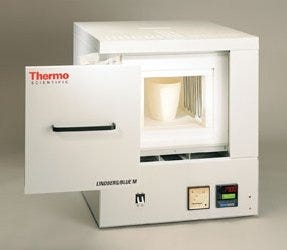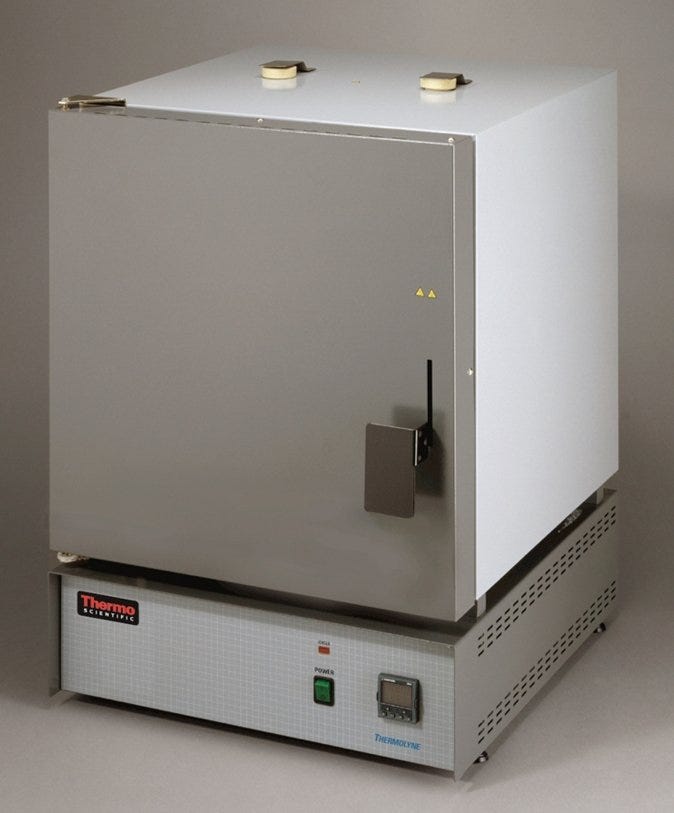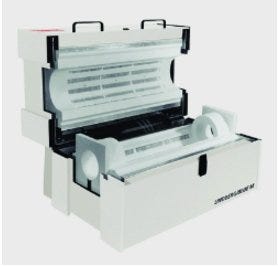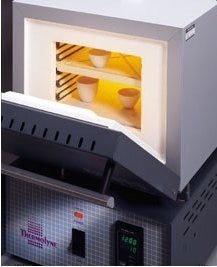Furnaces have been part of laboratories for hundreds of years. Some of the first chemists to experiment with ultra-high temperatures were indeed brave, considering the flammability of many substances (in those days, perhaps known, or not…). Yet even today with our most modern processes and equipment, ultra-high temperature is still used in chemistry and manufacturing. Advances in furnaces have certainly been made over the years, improving efficiency and safety. As industry has grown and developed, we’ve also expanded the range of applications for furnaces.
Here, we look at some lab furnace types—how they work and how they are used.
Box and Muffle Furnaces

Box furnace by Thermo Scientific
Box furnaces (also called Ash furnaces) have many applications in modern research and chemistry laboratories. These furnaces are used to determine the amount of non-combustible and non-volatile (ash) material in a sample. To determine the ash quantity, a sample is placed in the furnace and exposed to high temperatures (typically up to 1,100°C) for a given period of time. The combustible and volatile material in the sample is burned off and removed from the furnace, typically as gas.
The furnace is placed in a fume hood during operation to allow safe venting of the gas. The remaining material in the furnace after the procedure is complete consists entirely of ash which is not burned off at high temperatures. This process is commonly used for coal and petroleum coke ashing procedures.

Muffle furnace, Thermo Scientific
A muffle furnace is used for many of the same types of protocols as an ashing furnace. The use of mechanical convection in these ovens directs airflow out of an exhaust muffle, so typically does not require placing the furnace within a fume hood.
Common applications for a muffle furnace include high-temperature applications such as fusing glass, creating enamel coatings, ceramics and soldering and brazing articles. Also, advances in materials used for heating elements, such as non-flammable molybdenum disilicide, can now produce working temperatures up to 1,800 degrees Celsius (3,272 degrees Fahrenheit), which facilitate more sophisticated metallurgical applications.
Tube Furnaces
Tube furnaces are used to synthesize and purify compounds, primarily inorganic. These furnaces consist of a cylindrical cavity that is heated via one or more heating elements outside of the chamber. The cavity’s temperatures can reach up to 1,100°C. Additionally, tube furnaces typically have one (or more) heating cavity that can be controlled via thermocoupler feedback, exposing materials to different temperatures for varying periods of time. Transport reactions, for example, requiring multiple temperature zones within the same compartment, can be performed in tube furnaces. The production of crystals also results from transport reactions.

Tube furnace from Thermo Scientific
An example of a material prepared using a tube furnace is the superconductor Yttrium barium copper oxide (YBa2Cu3O7), a mixture of CuO, BaO, and Y2O3. The concoction is heated in a tube furnace at several hundred degrees using oxygen to help achieve the desired result. Other superconductors are created using specific tube furnace “recipes,” depending on their individual reaction characteristics and control criteria.
Final Considerations
There are a host of factors to be examined when selecting an instrument to meet your needs, whether utilizing a laboratory furnace for metallurgic, semiconductor applications or chemicals research. First and most importantly, you will want to select a furnace that offers the appropriate temperature range for your application.
In addition, many experiments require the introduction of a process gas for transport processes. If your application requires an inert gas, you will want to select a furnace that allows for the introduction of gasses using a warming gradient. Lastly, the configuration of the furnace will need to be determined: muffle, box or tubing furnaces all are offered in a wide range of configurations
Visit Laboratory-Equipment.com to see the range of furnaces we offer, and learn more about them.



